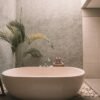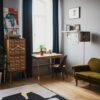A well-designed creative workspace is more than just a place to make art—it’s an environment that fuels imagination, productivity, and peace of mind. From the color of the walls to the direction of the light, every detail plays a role in shaping inspiration. But beyond the aesthetic and functional elements lies an often-overlooked factor: security. Whether you’re working from a personal studio or a shared space, ensuring your tools, equipment, and artwork are safe is just as essential as keeping your creative energy flowing. For those setting up their dream studio, exploring the complete guide to alarm window contacts by Alarm Grid can help create a workspace that is both inspiring and secure.
The Importance of an Intentional Layout
The layout of your workspace has a direct impact on how easily ideas flow and how efficiently you work. A cluttered or poorly arranged space can create distractions and mental blocks, while a thoughtfully structured layout promotes focus. Begin by assessing the type of creative work you do. A painter, for instance, may need wide-open floor space and easy access to natural light, while a digital artist or designer might require ergonomic desk setups with multiple screens.

Creating zones within your workspace can also help you manage your creative process better. Designating separate areas for brainstorming, production, and reflection can help guide your mindset as you progress through different stages of work. For example, having a calm reading nook or an inspiration corner away from your main workstation can offer a mental reset. Positioning materials, supplies, and equipment within reach prevents workflow interruptions and maintains a sense of harmony in the space.
Lastly, consider movement and accessibility. Clear walking paths, properly placed furniture, and logical organization reduce stress and increase efficiency. The more comfortable and functional your environment, the easier it becomes to focus purely on your craft.
Lighting: The Heart of Creativity
Lighting is one of the most powerful tools in any creative space. It influences not only visibility but also mood, color perception, and energy levels. Natural light, when available, is the ideal choice for artists and designers because it provides balanced illumination and enhances color accuracy. Positioning your main work area near a window can make your workspace feel more open, inspiring, and vibrant throughout the day.
However, relying solely on natural light isn’t always possible. Supplemental artificial lighting should be carefully selected to mimic daylight and reduce eye strain. Adjustable lamps, LED panels, and task lighting help control brightness levels during late-night work sessions or overcast days. Warm-toned lighting can promote relaxation and comfort, while cooler tones are more suitable for precision tasks such as sketching or photo editing.
The direction and reflection of light also matter. Avoid harsh glare on screens or artwork surfaces, and use soft diffusers or shades to evenly distribute light. Combining layered lighting—ambient, task, and accent lighting—creates dimension and supports different creative moods. Whether you’re sculpting, painting, or editing, a well-lit workspace enhances both performance and comfort.
Blending Aesthetics with Functionality
Designing a creative studio should reflect your personality without sacrificing practicality. Every color, texture, and furnishing should serve a purpose. Neutral walls with pops of color can help maintain focus while keeping the environment stimulating. Open shelving and storage units not only showcase materials but also make it easy to find tools quickly. Adding personal touches—like artwork, plants, or inspirational quotes—creates a sense of belonging and emotional connection to the space.
Ergonomics plays a significant role in maintaining comfort and long-term well-being. Investing in supportive seating, adjustable desks, and proper monitor placement can help prevent fatigue during long creative sessions. Additionally, good ventilation and acoustic balance improve both comfort and concentration, ensuring that your space feels pleasant and peaceful. The key is to design a workspace that feels uniquely yours but is structured enough to promote consistent creativity.
The Overlooked Element: Studio Security
While design and comfort are crucial, security is equally important—especially if your workspace contains valuable equipment, art pieces, or client work. Many creatives overlook this until something goes wrong. Simple preventive measures can go a long way toward protecting your investment and ensuring peace of mind.
Windows, in particular, are both a source of inspiration and a potential vulnerability. If your studio has large windows or glass doors, consider installing sensors that alert you to unauthorized openings. The complete guide to alarm window contacts by Alarm Grid explains how these devices can seamlessly integrate into your space without disrupting your aesthetic. These sensors detect even the slightest movements and can be connected to broader home security systems for continuous monitoring.
In addition to sensors, smart locks, motion detectors, and discreet surveillance tools can help safeguard your workspace without compromising design. The goal is to make security feel invisible yet reliable—allowing you to focus on your art rather than worrying about the safety of your materials or creations.
Creating Balance Between Inspiration and Safety
The best creative spaces are those that harmonize beauty, efficiency, and safety. Lighting sets the tone, layout enhances flow, and security preserves peace of mind. Together, these elements create an environment where inspiration thrives without distraction. Designing your ideal workspace doesn’t mean choosing between creativity and caution—it’s about blending both so seamlessly that security becomes a natural part of the design.
When you invest thought into every detail—from how sunlight moves across your studio walls to how secure your windows are—you’re not just building a workspace; you’re crafting the foundation for your artistic success. With careful planning and the right tools, including insights from the complete guide to alarm window contacts by Alarm Grid, your creative sanctuary can be both a place of imagination and a haven of safety.








